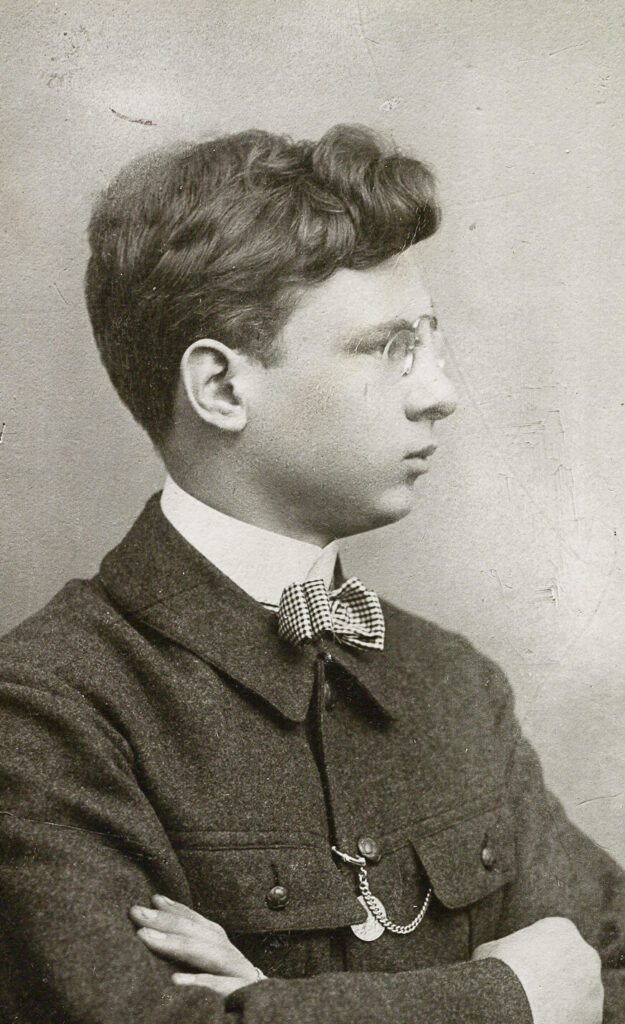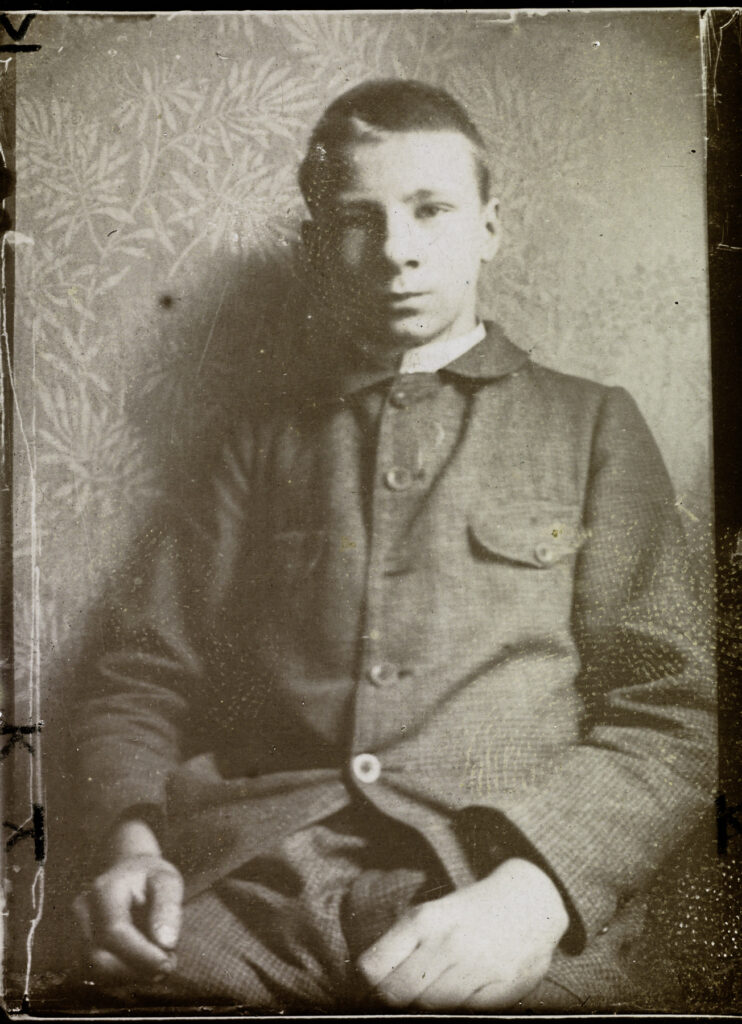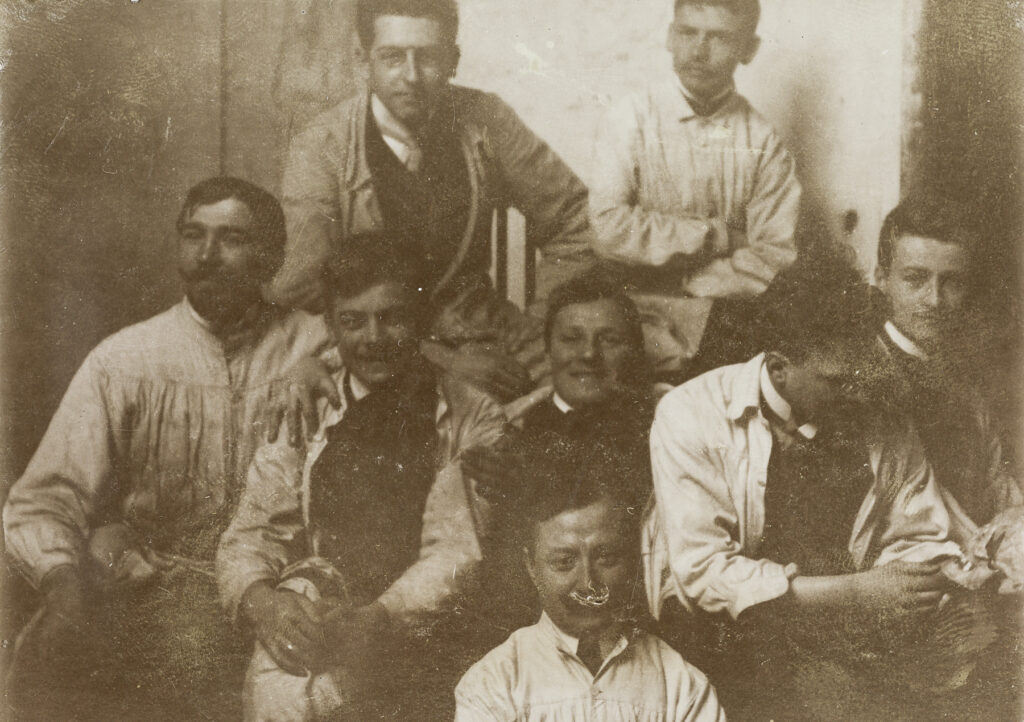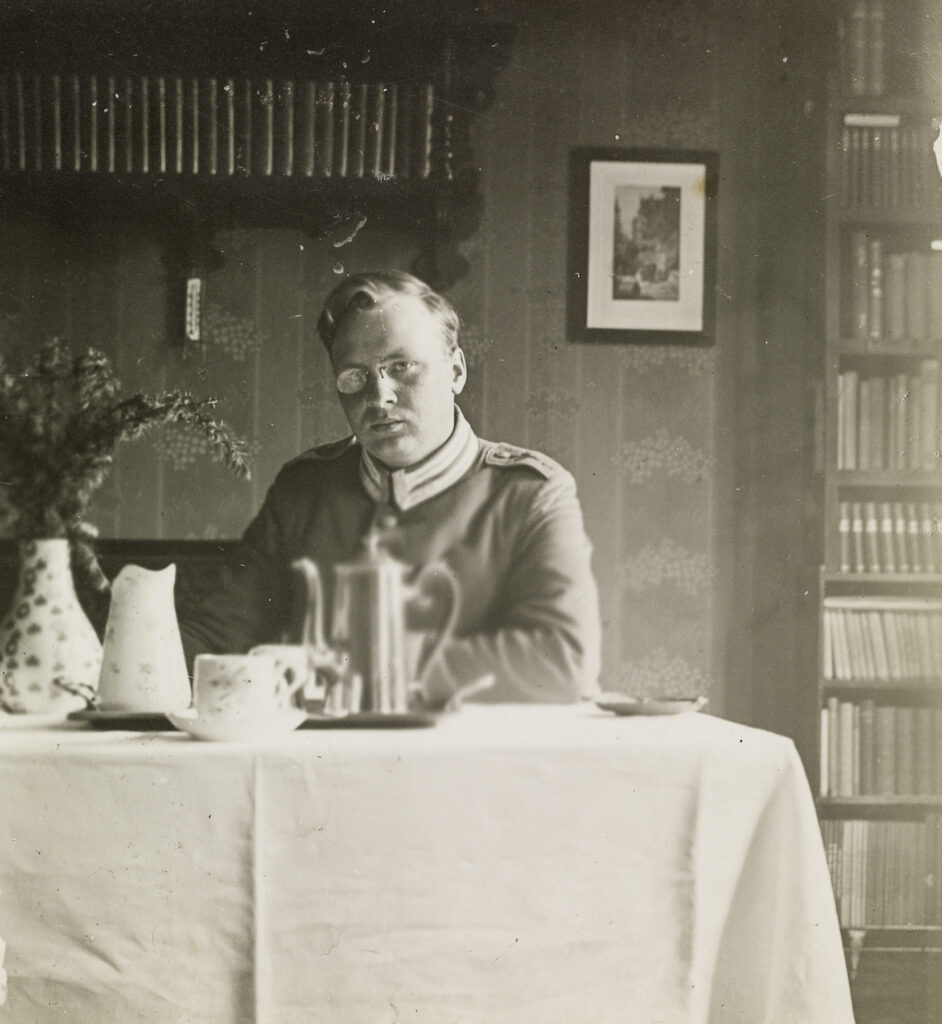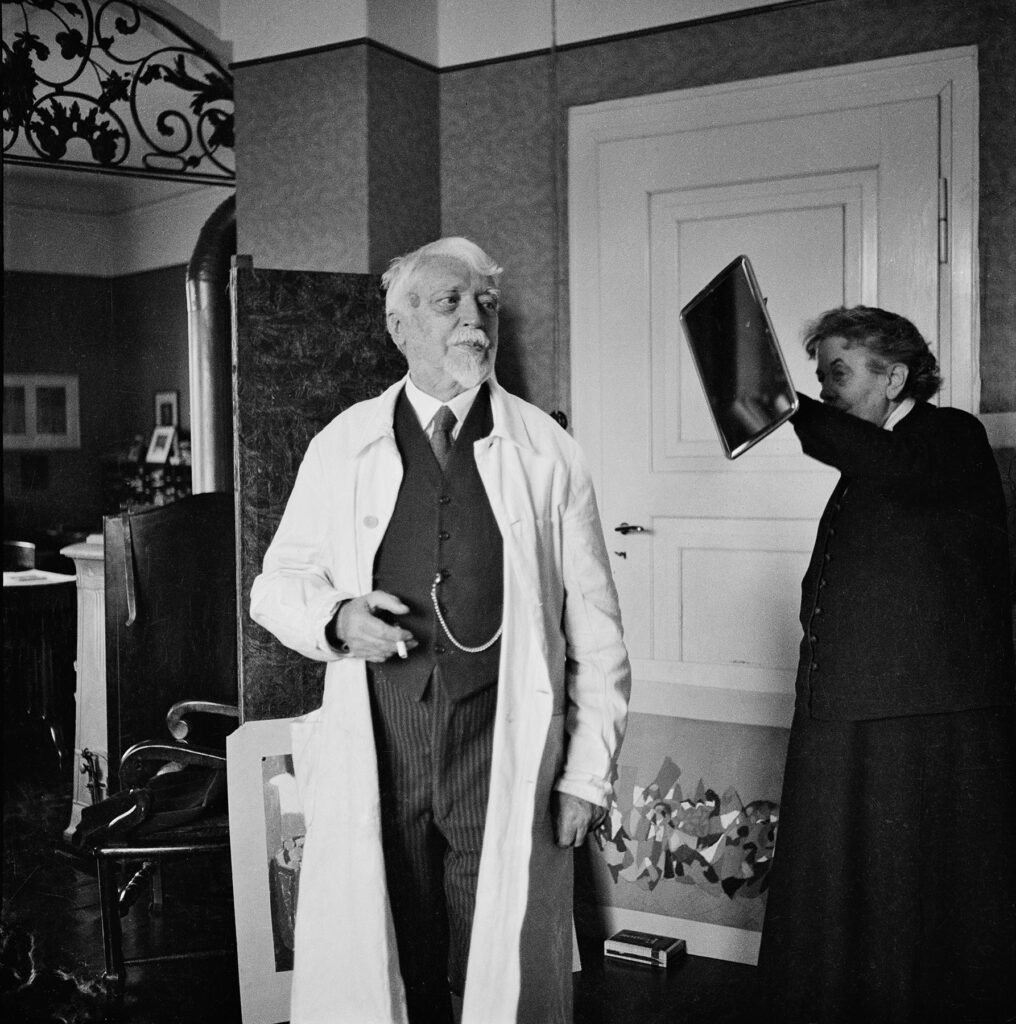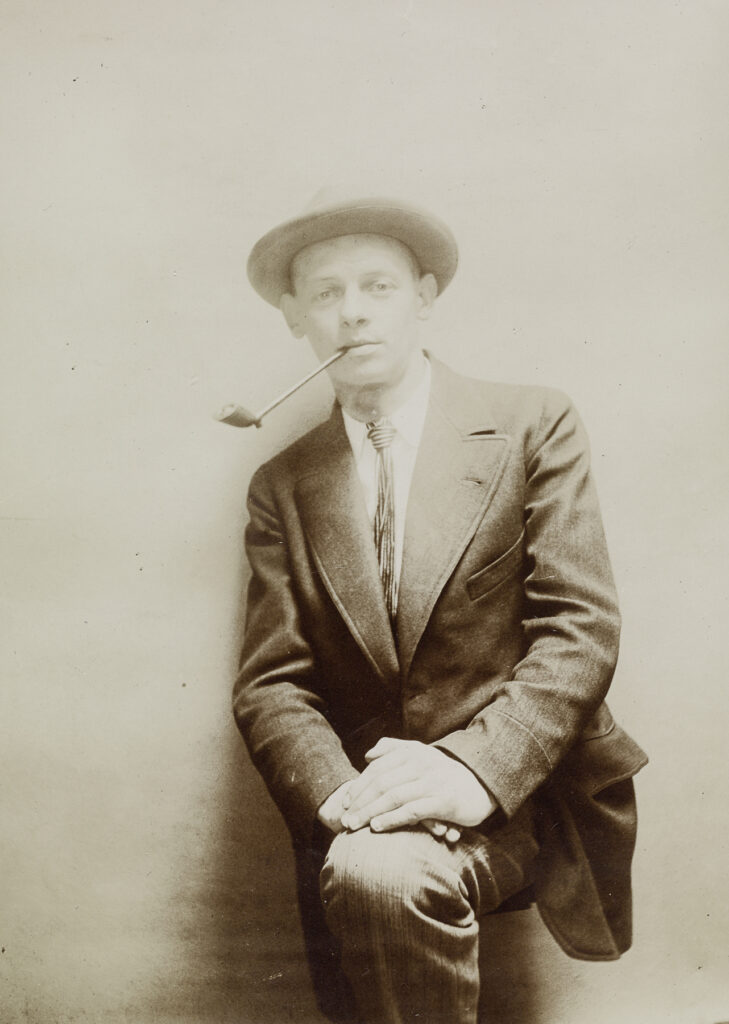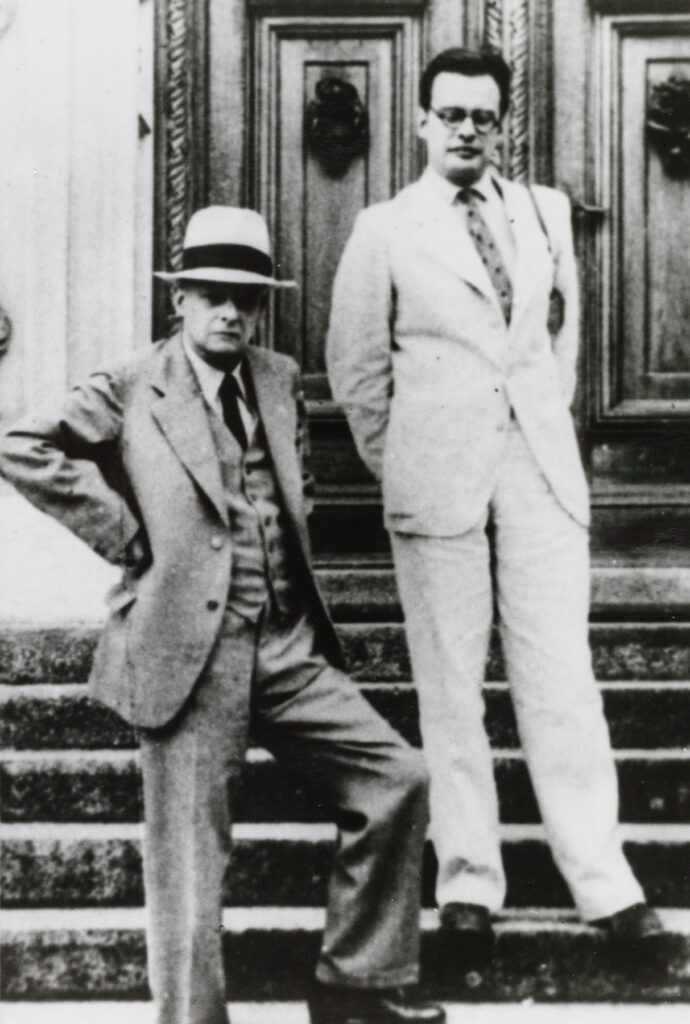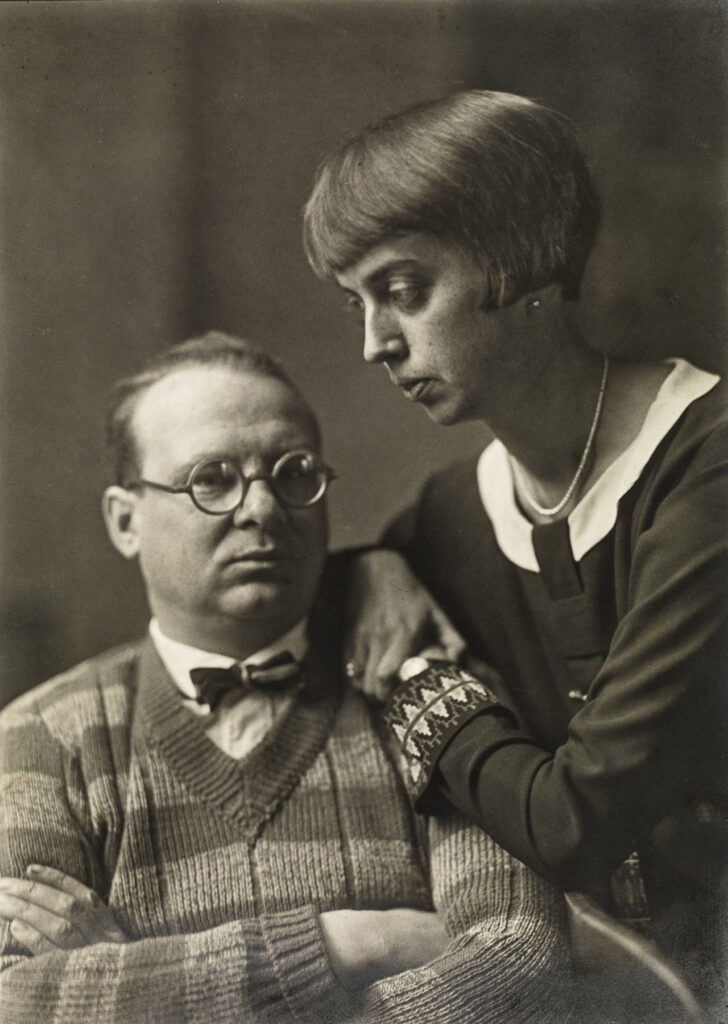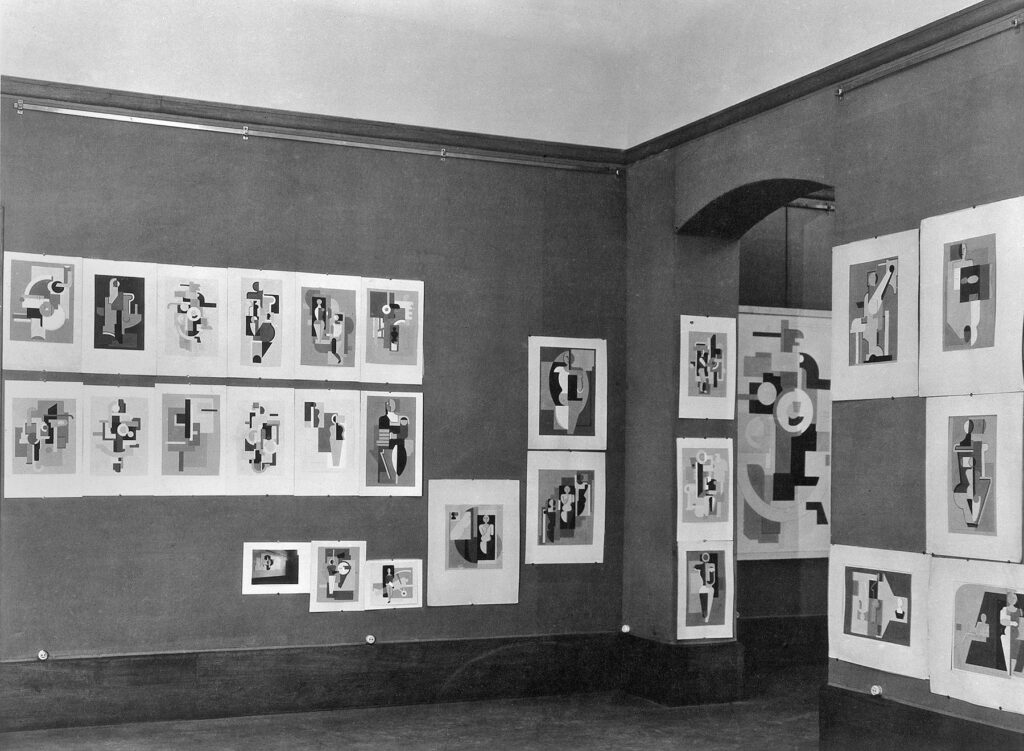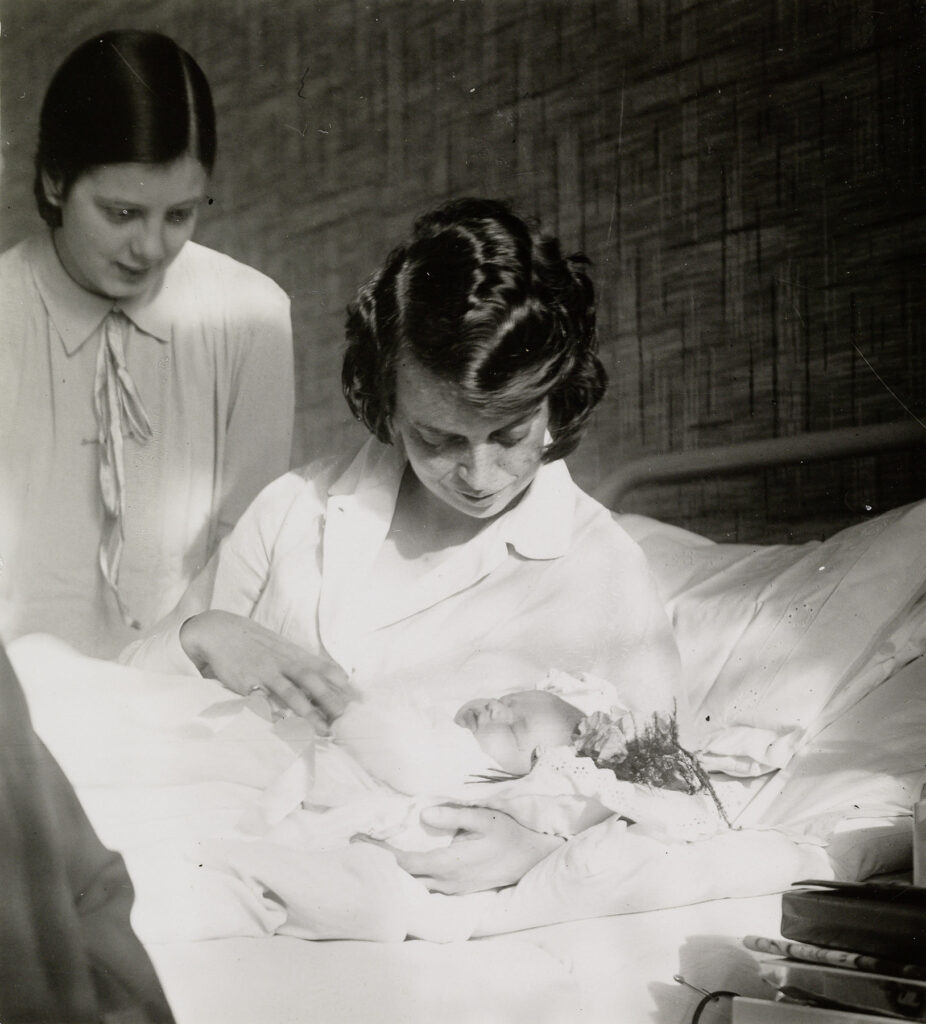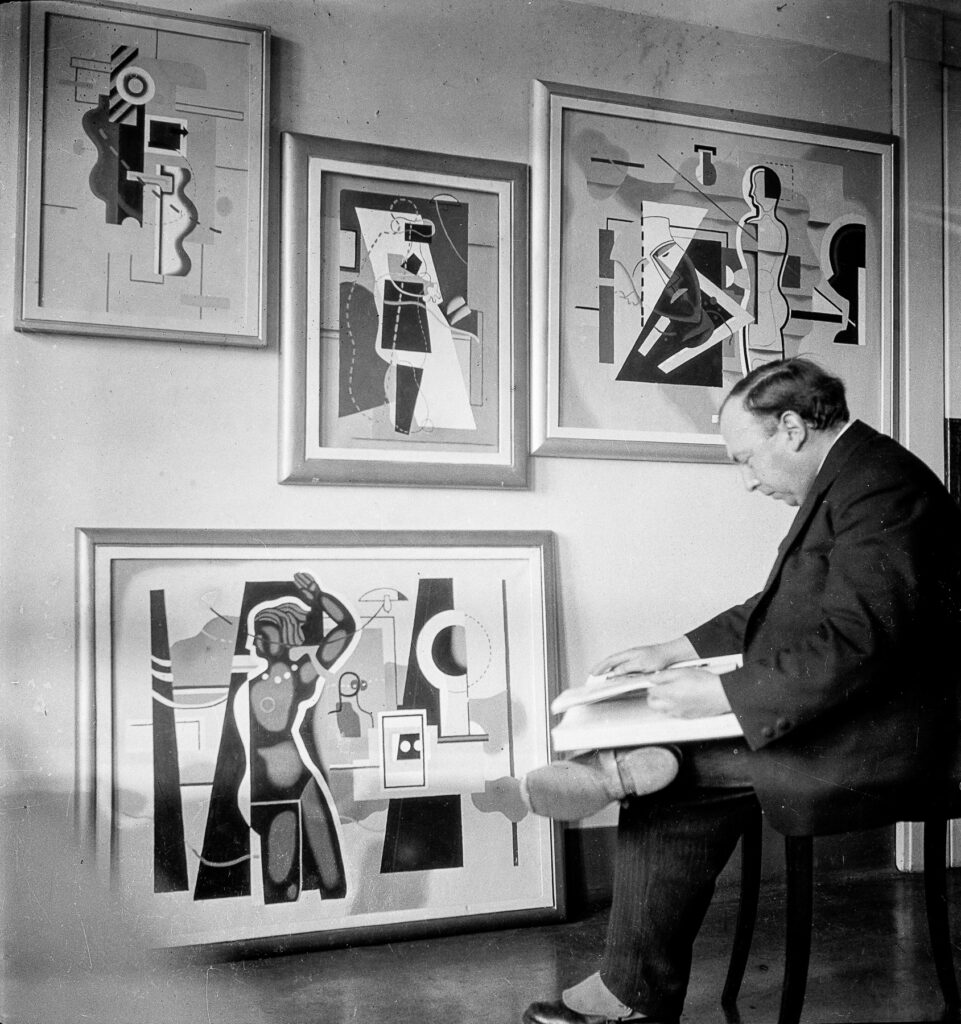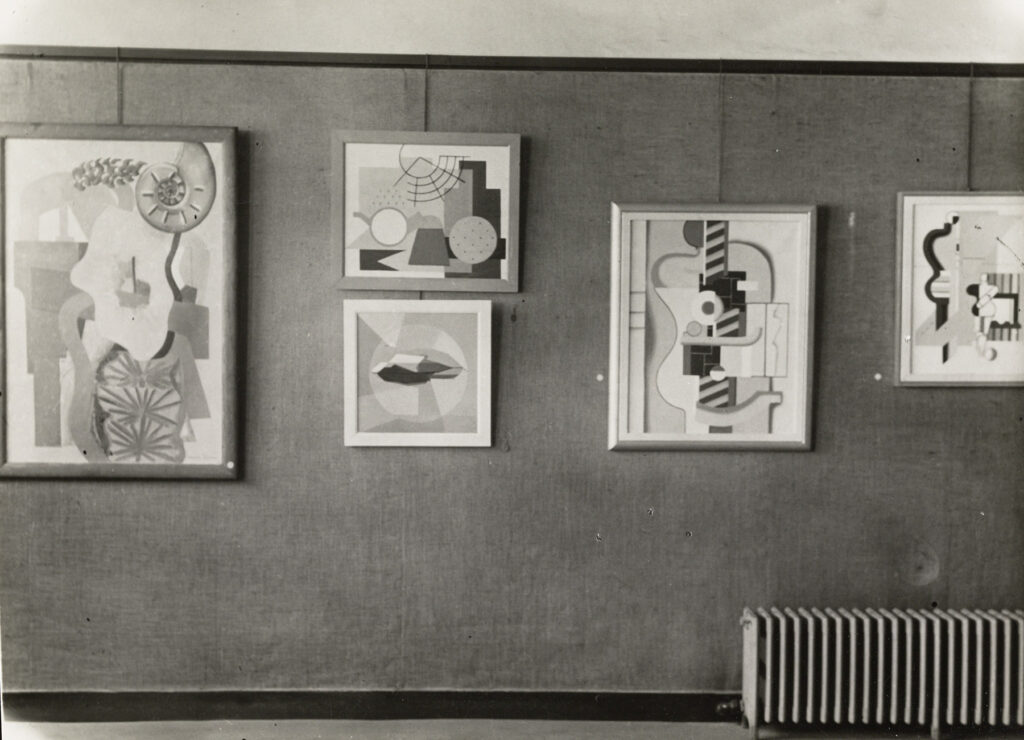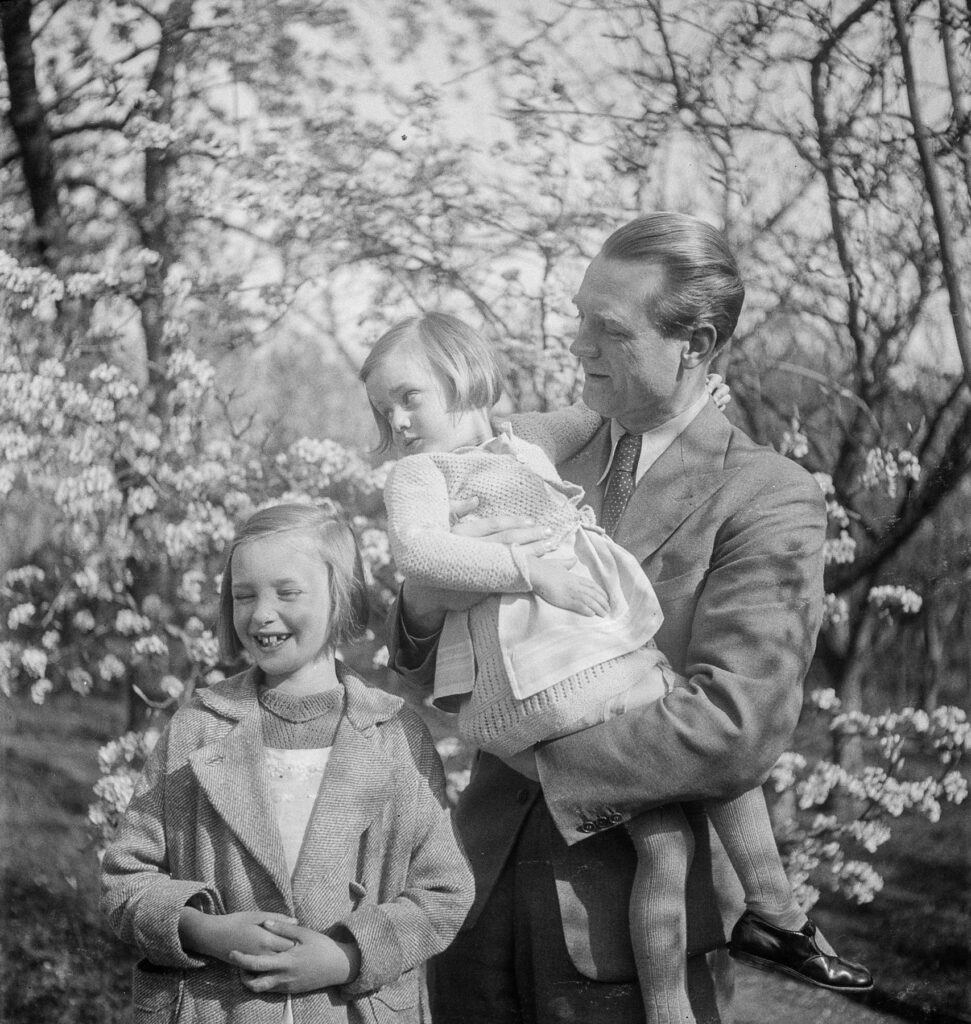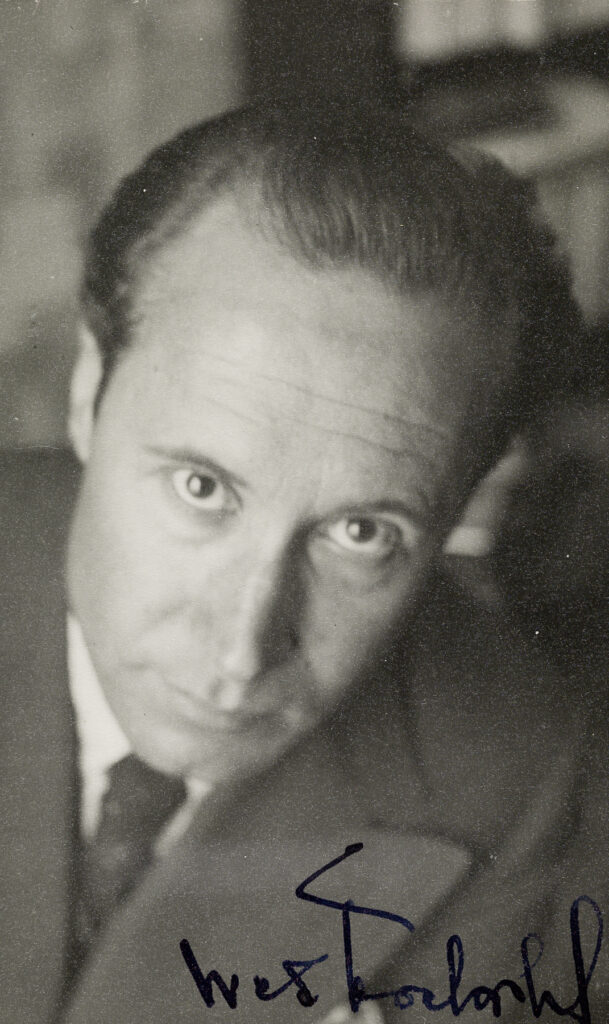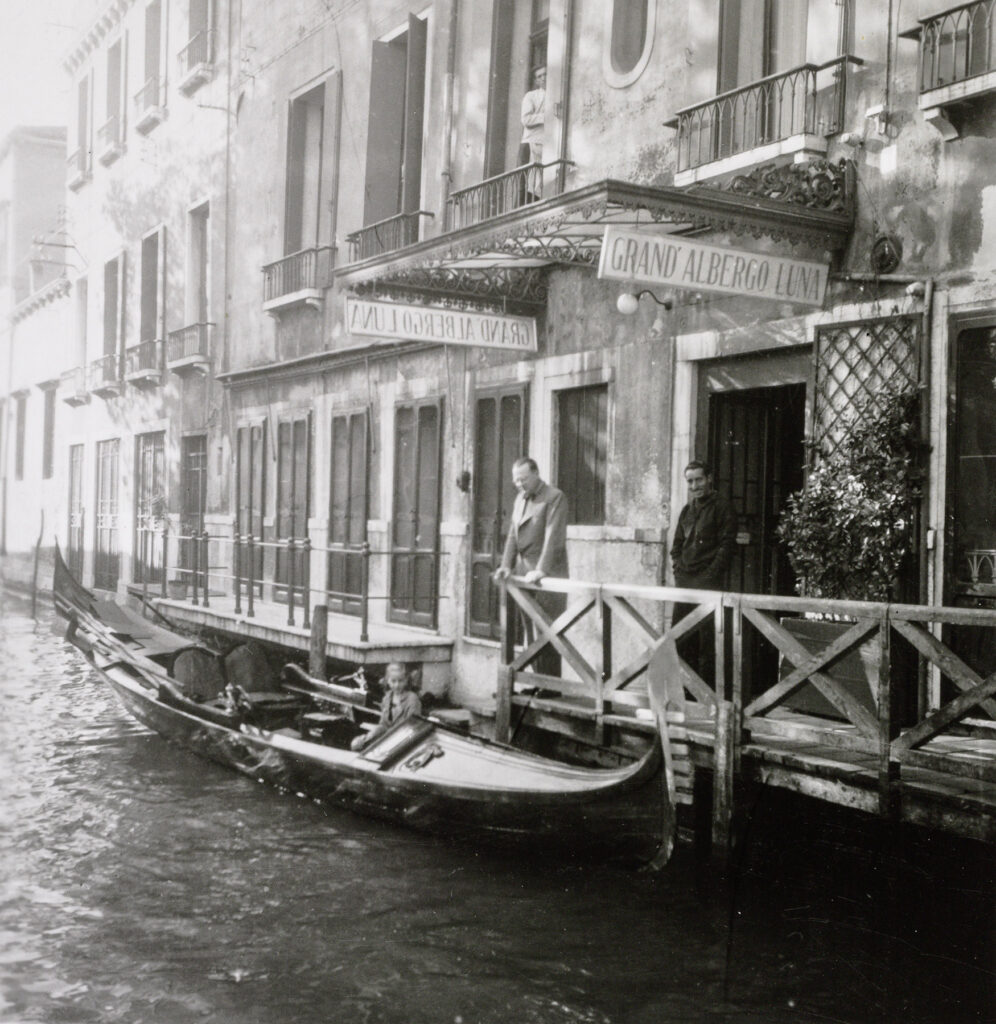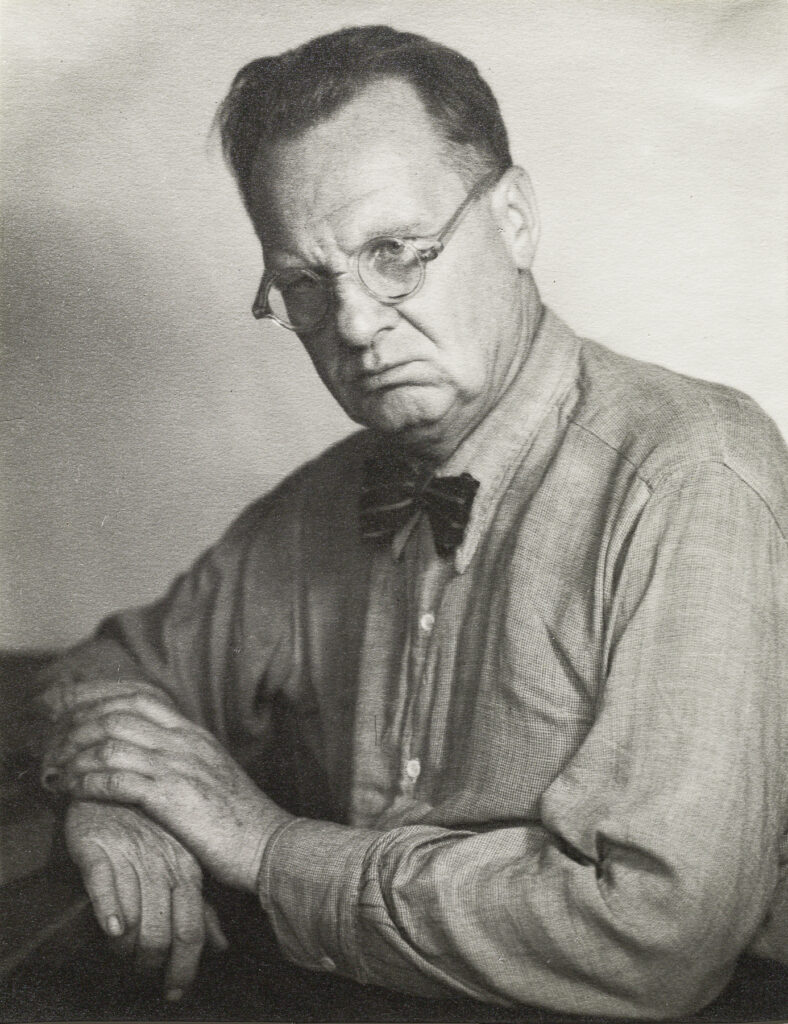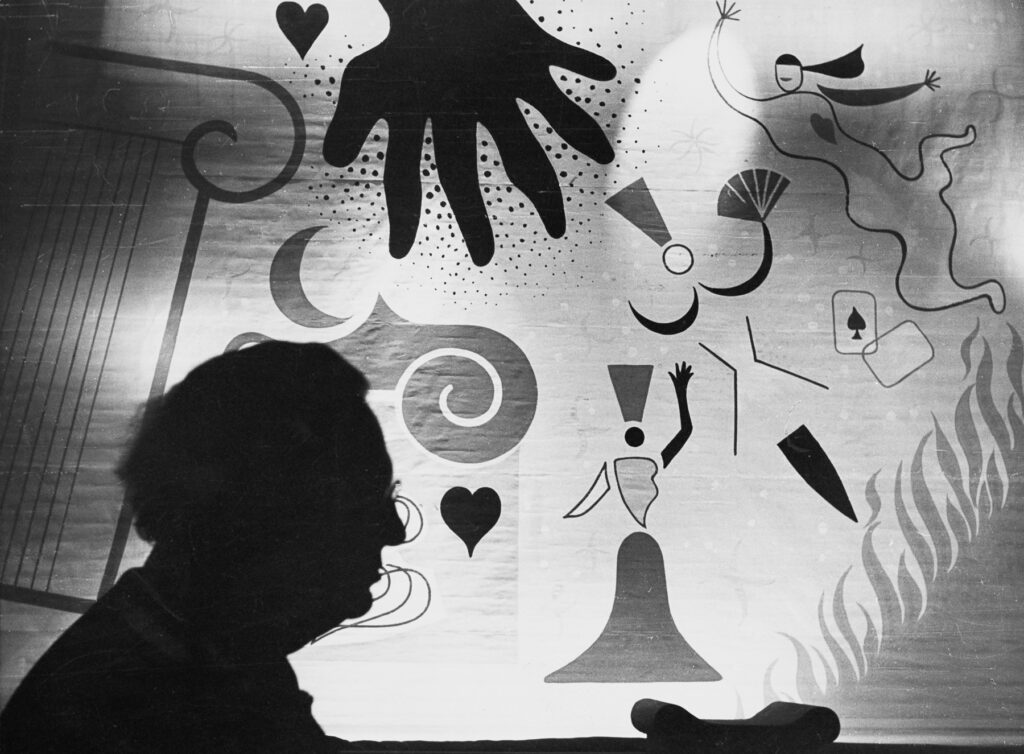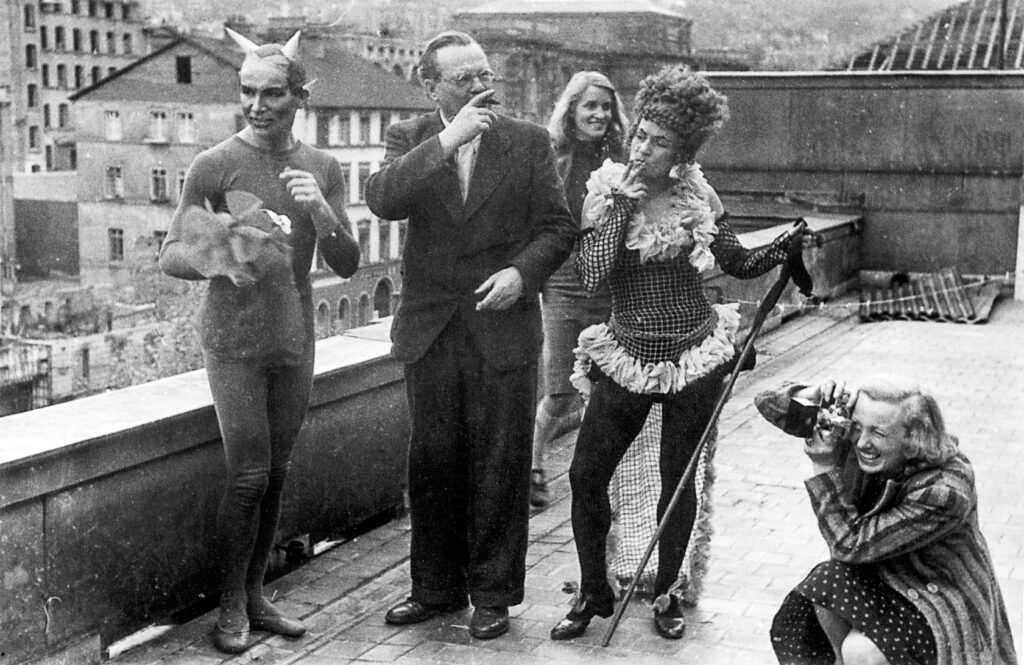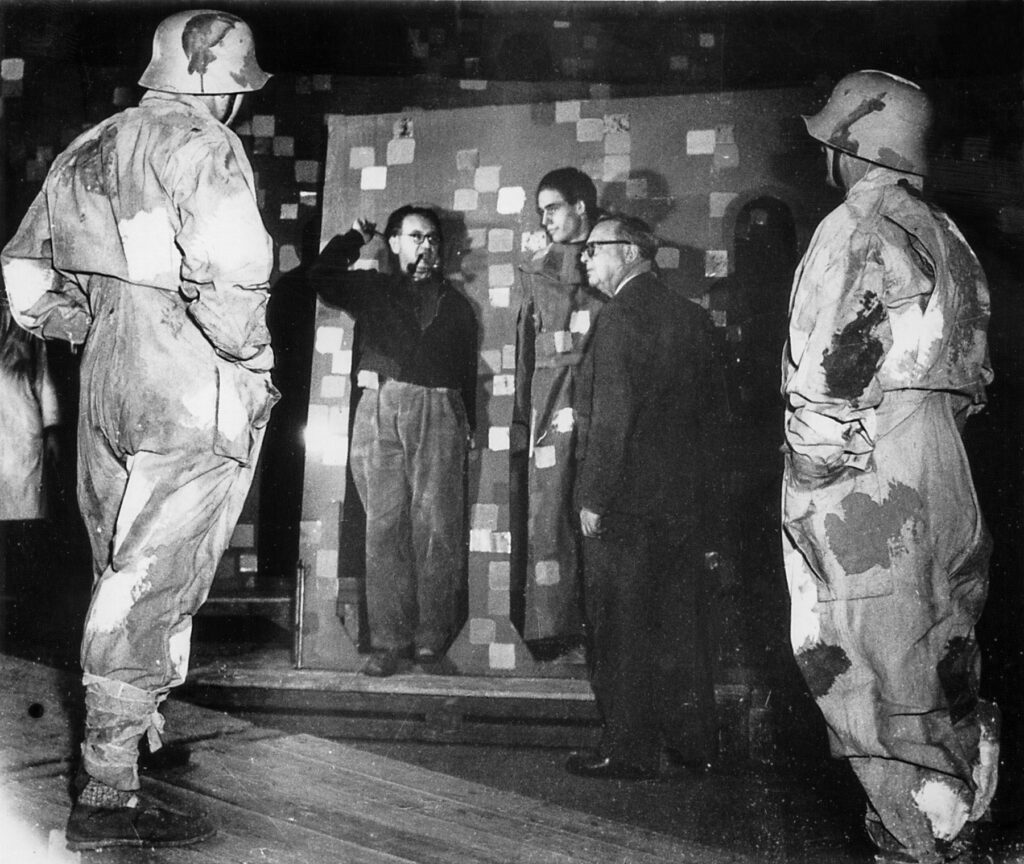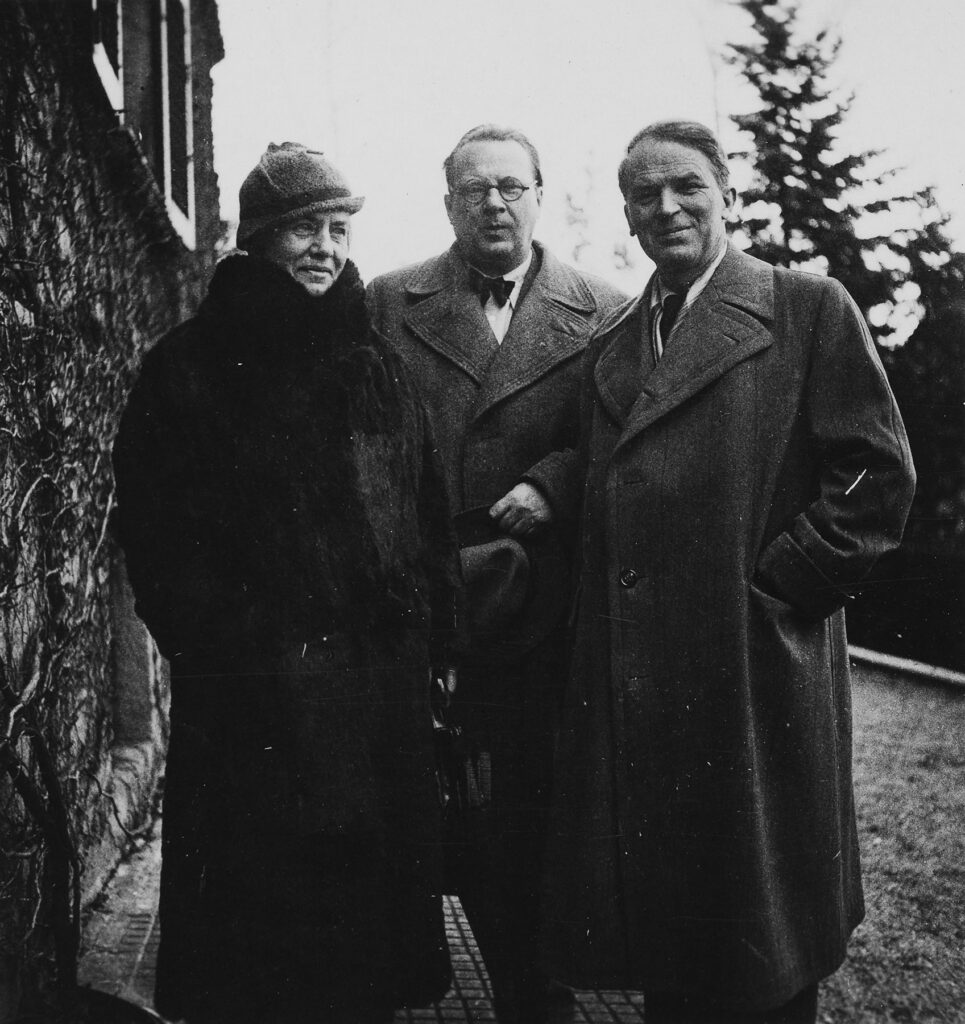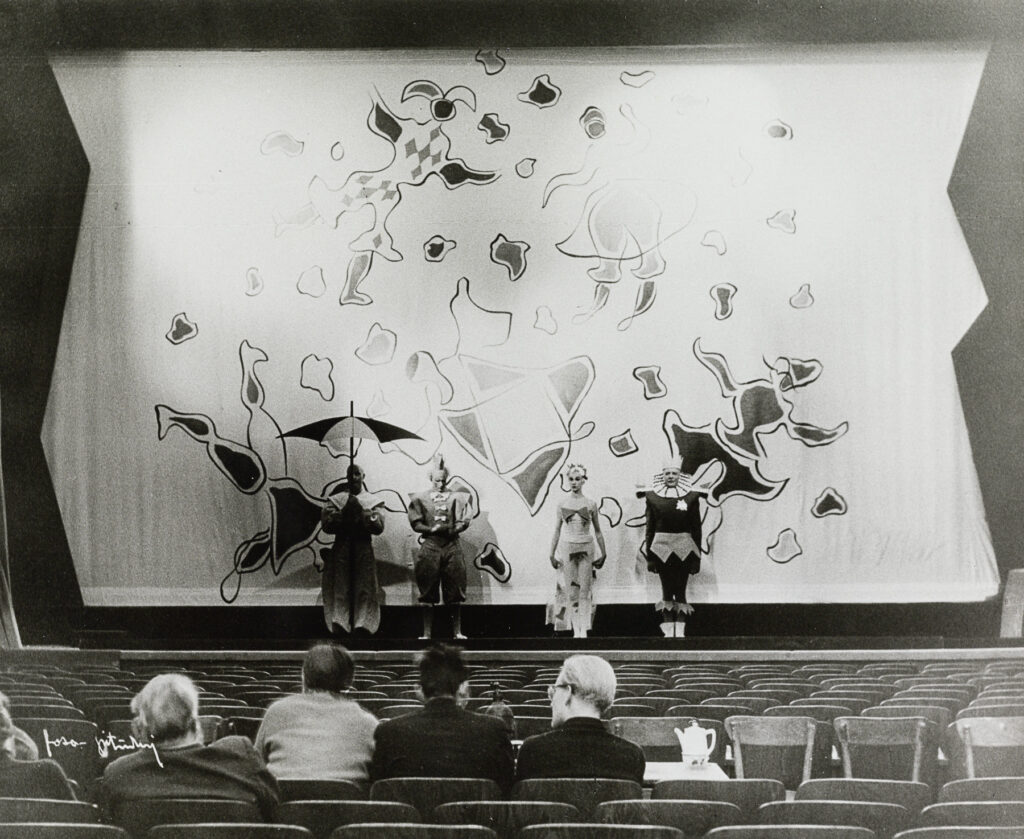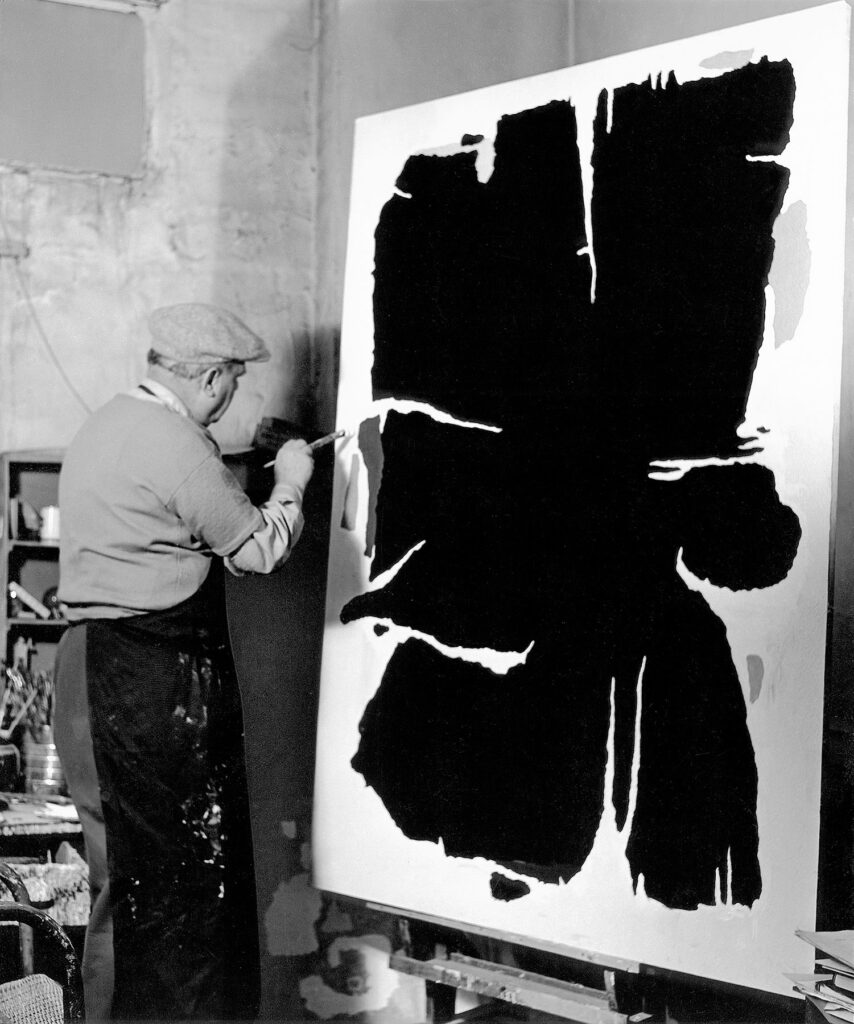This brief tabular resume offers a quick view of Willi Baumeister’s life and work. More detailed information on his personal development is provided in the sub-sections and work overview organized by time period. Moreover, short autobiographies from 1946 and 1955 show how Willi Baumeister saw himself.
Short Biography
1889
Born in Stuttgart. More on his background and family.
1905-07
Trains as decorative painter.
1905-1911
Attends the Königlich Württembergischen Akademie der Bildenden Künste in Stuttgart. At the time of his training.
1905-12
Stays on Lake Constance and in Paris. First exhibition in Stuttgart. Begins friendships with Oskar Schlemmer and Otto Meyer-Amden.
1912–13
Stays in Amden, Switzerland.
Participates in exhibitions including the “Erster Deutscher Herbstsalon” (First German Autumn Salon) at the gallery ‘Der Sturm’ in Berlin. More on his first artistic steps.
1914–18
Travels to Antwerp, Amsterdam, London, and Paris.
Serves in World War I.
1919
Master student of Adolf Hölzel. Co-founds the “Üecht Group” Stuttgart and becomes member of the Berlin “Novembergruppe” (November Group).
First stage design.
Works as typographer.
1920
Exhibits with Oskar Schlemmer and Kurt Schwitters in Dresden.
1922
First international publication in the art journal “L’Esprit Nouveau”, Paris.
1923–26
Exhibits in Germany and abroad. Visits the Bauhaus in Weimar. Meets Wassily Kandinsky and Paul Klee.
1926
Exhibits at the “International Exhibition of Modern Art” in New York.
Marriage with Margarete (Margrit) Oehm.
1927
First solo exhibition in Paris.
Offered professorship for typography, commercial graphics, and fabric printing at the Städtische Kunstgewerbeschule (Municipal School of Applied Arts), today Städelschule in Frankfurt am Main. Becomes member of the “ring neue Werbegestalter” (Circle of New Commercial Designers). More on his Frankfurt Years.
1928
Moves to Frankfurt am Main.
Birth of daughter Krista.
1929
Begins friendship with Julius Bissier. In Paris visits Fernand Léger, Le Corbusier, Amédée Ozenfant, Carl Einstein, Christian Zervos und Roger Ginsburger. Becomes member of the artist association “Cercle et Carré”.
1930
Solo exhibition in Paris.
1931
Becomes member of the artist group “Abstraction — Création”. First monograph by Will Grohmann published. Begins lifelong exploration of prehistoric art. Invited by Madame de Mandrot to an artist gathering at the Château La Sarraz, Switzerland.
1932
Last exhibition in Germany until 1945 at the Gallery Cassirer in Berlin.
1933
As part of the first official acts of the National Socialists Baumeister is dismissed without notice from his Frankfurt teaching position and denounced as a degenerate artist until the end of 1945. More on the period of Ostracism.
Birth of daughter Felicitas.
1934
Eduardo Westerdahl’s monograph Willi Baumeister published.
1935
Exhibits in Milan and Rome. Travels to Milan, meets Carlo Carrà.
1937–38
Participates in the Constructivists Exhibition in Basel. Pictures by Baumeister are shown in the exhibition “Entartete Kunst” in Munich (Degenerate Art Exhibition). Stores paintings, gouaches, and drawings in the Kunsthalle Basel to keep them out of reach from the National Socialists. Travels to Paris, meets with Fernand Léger, Le Corbusier and gallery owner Jeanne Bucher. Begins work with the Wuppertal varnish factory, Dr. Kurt Herberts & Co. researching and writing on painting techniques and their historical origins.
1938
Participates in the London exhibition “Twentieth Century German Art” organized by Herbert Read.
Meets Hans Arp, Sophie Taeuber-Arp, Joan Miró, and Wassily Kandinsky.
1939
Solo exhibition in Paris at the Gallery Jeanne Bucher.
1941
Receives prohibition on painting and exhibiting, according to the decree of the Reichskammer der Bildenden Künste (Reich Chamber of Fine Arts).
In fall Baumeister travels with his family to Verona, Venice, Bologna, and Florence.
1943–45
On April 13, 1943 Oskar Schlemmer dies.
Because of air raids moves to Urach in the Swabian Alps.
Works on his manuscript “Das Unbekannte in der Kunst” (The Unknown in Art). Experiences the end of the war in Horn on Lake Constance.
1946
Offered professorship at the Staatliche Akademie der Bildenden Künste (State Academy of Fine Arts) in Stuttgart. More on the period of the New Beginning.
1947
Baumeister’s manuscript “Das Unbekannte in der Kunst” published in Stuttgart.
Produces stage design for Manuel de Falla’s ballet “Liebeszauber” (Spell-bound Love) at the Württemberg Staatstheater in Stuttgart.
1948
Participates in the XXIV Biennale in Venice and in the “Salon des Réalités Nouvelles” in Paris. Produces further stage designs.
1949
Co-founder of the “Gruppe der Gegenstandslosen”(Group of Nonrepresentational Artists) (renamed Group “ZEN 49” in January 1950).
Produces stage design for Egon Vietta’s “Monte Cassino”, directed by Gustav Rudolf Sellner in Essen.
Solo exhibition in Paris at the Gallery Jeanne Bucher.
1950
Participates in the Ersten Darmstädter Gespräch (First Darmstadt Dialogue).
Travels to Spain and France and participates in the Second International Art Congress of the Escuela de Altamira in Santillana del Mar near Santander, Spain.
1951
Participates in the first Biennale (I. Bienal) in São Paulo, receives Biennale Prize.
1952
Solo exhibition in New York at the Hacker Gallery. Participates in the XXVI Biennale in Venice. Monograph by Will Grohmann published.
1953
Shows at the exhibition “Younger European Painters” in New York.
Produces stage design for Max Kommerell’s “Kasperlespiele für große Leute” (Punch and Judy Shows for Grown-Ups), directed by Gustav Rudolf Sellner.
1954
Solo exhibitions in Stuttgart and Paris.
Pictures stored in the Kunsthalle Basel in 1937–38 released and returned to Stuttgart.
1955
The Vienna Secession distinguishes Baumeister for his life achievement with the Klimt-Honor. More on the riches of the Last Years up to 1955.
Visits and has solo shows in Paris and Cologne. Participates in the first documenta in Kassel and in the exhibition “Peintures et Sculptures non-figuratives en Allemagne d’Aujourd’hui” (Non-Figurative Painting and Sculpture in Germany Today), Cercle Volnay, Paris.
On August 31 Willi Baumeister dies while painting in his studio in Stuttgart.
